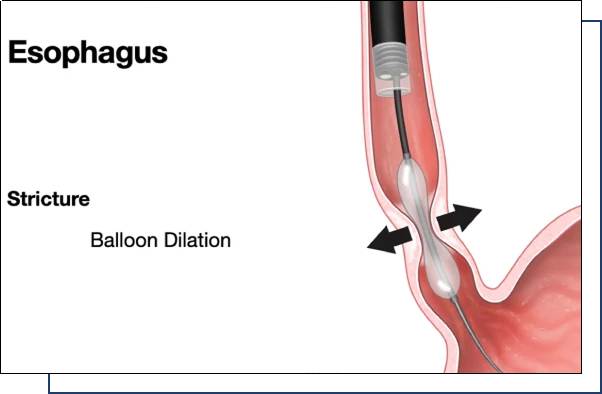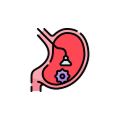Overview
Stricture dilation is a medical procedure used to widen a narrowed section (stricture) of a hollow organ, such as the oesophagus (food pipe), urethra or intestines. Strictures can form due to inflammation, injury, surgery or disease and may cause symptoms like pain, difficulty swallowing or problems passing urine or stool. Stricture dilation is a minimally invasive technique that helps restore normal passage and improve function.
Don’t wait for symptoms to get worse. Get your condition diagnosed timely from Dr. Debjoy Sau, a certified gastroenterologist in Kolkata. Schedule an appointment now.

Types of Strictures Dilation
The type of stricture dilation depends on the location and severity of the narrowing. Common types include:
Oesophageal Dilation:
This procedure treats narrowing in the food pipe that causes swallowing difficulties.
Urethral Dilation:
This helps open a narrowed urethra that may cause difficulty in urination.
Colonic or Intestinal Dilation:
Doctors use this process when the colon or small intestine is narrowed due to surgery, inflammation or disease.
Anal or Rectal Dilation:
It is done for strictures in the lower gastrointestinal tract.
Purpose
Doctors recommend stricture dilation to:
Relieve symptoms caused by narrowing of the passage, such as trouble swallowing, urinating or passing stool.
Allow food, fluids or urine to pass normally.
Avoid or delay complex surgeries.
Improve quality of life.
Allow diagnostic tools to pass through narrowed areas.
Help manage conditions like peptic stricture, post-radiation stricture or inflammatory bowel disease.
Talk to Dr. Debjoy Sau for expert guidance, a skilled gastrointestinal and endoscopic surgeon with extensive experience in advanced dilation techniques.
How Does It Work?
You may be asked to avoid food and fluids before the procedure.
The procedure is usually done under local anaesthesia, sedation or general anaesthesia.

A thin, flexible tube with a camera called an endoscope will be inserted into the body to locate the stricture.

A balloon or dilator will be passed through the narrowed area (stricture) and slowly inflated or expanded to widen it.

In some cases, dilation may be repeated over multiple sessions.
The procedure usually takes 30–60 minutes.
Most patients are discharged on the same day. You may be observed for a few hours before discharge.
Some discomfort or soreness may occur temporarily after the procedure.
Book An Appointment
FAQs
Know Your Answers
Is stricture dilation painful?
Your doctor will use sedation or anaesthesia during this process to minimise any discomfort. Mild soreness or discomfort may be felt afterwards, but it usually goes away within a day.
How many times will I need stricture dilation?
This depends on the cause and severity of the stricture. Some people need only one session, while others require repeated dilations.
Are there any risks?
Though rare, risks may include bleeding, infection or a tear in the wall of the organ. These are usually manageable with immediate treatment.
How long will it take me to recover?
Most patients recover within 24–48 hours and can return to their regular routine shortly after the procedure.
Can strictures come back?
Yes, in some cases, especially with chronic conditions like GERD or inflammatory bowel disease, strictures may recur. Dr. Debjoy Sau recommends routine follow-up for timely diagnosis and treatment.

